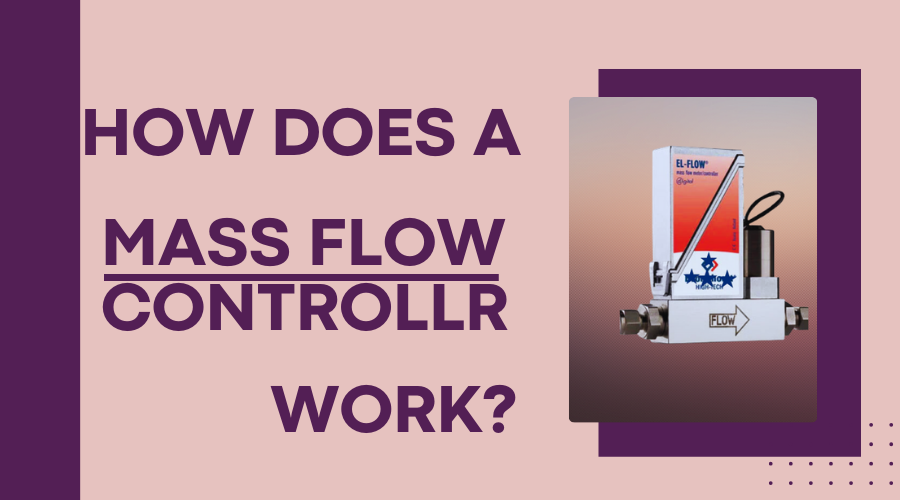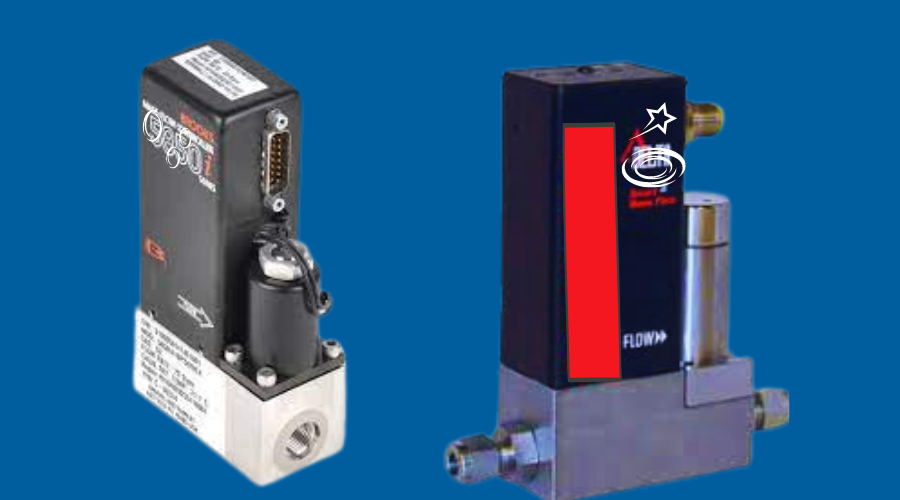-
 No. 659 Hewang Rd, Jiading District, Shanghai P.R.China
No. 659 Hewang Rd, Jiading District, Shanghai P.R.China
-
 info@marvels-sense.com
info@marvels-sense.com
-
 +86-18321684506
+86-18321684506

Imagine a miniature conductor meticulously controlling airflow in a delicate instrument. That's a Mass Flow Controller (MFC) but for all industrial applications! Unlike a regular flow meter, MFCs are like tiny detectives, using heat to measure gas flow accurately. Buckle up because we're about to dive into the fascinating world of these unsung heroes.
Ever wonder how these gadgets work their magic? Inside lies a particular sensor – a tiny wire constantly buzzing with electricity. As gas whooshes past, it sips some heat, causing a subtle change in the wire's resistance. The clever MFC electronics monitor this change, translating it directly into the flow rate – like a secret code for gas measurement!
Thermal sensors come in two Primary types used in MFCs, each with its detective approach:
Imagine our tiny wire constantly buzzing with electricity. As gas flows past, it steals some of that heat, causing a slight drop in resistance. The clever MFC electronics monitor this resistance change, which translates directly to the flow rate.
This sensor flips the script. The MFC constantly adjusts the current flowing through the wire to maintain a specific temperature. The more gas whooshes by, the more current is needed to counteract the heat loss. The MFC calculates the flow rate by monitoring the electrical current to keep the temperature steady.
Modern MFCs are packed with features that make them even more impressive, transforming them from simple flow meters into sophisticated control systems:
Gone are the days of fiddling with dials. Most MFCs can connect to computers or control systems via interfaces like RS-232 or Modbus. This lets you monitor and adjust flow from a central location – imagine conducting your gas flow orchestra wirelessly!
Some processes require a gentle increase or decrease in flow rate. MFCs with programmable ramping and settling times ensure smooth transitions, protecting delicate equipment from sudden changes. Picture a dimmer switch for gas flow, allowing for gradual adjustments.
Even the tiniest leak can throw off your measurements. Advanced MFCs act like leak detectives, sniffing out subtle changes in flow that might indicate a problem before it becomes a more significant issue. Imagine having an early warning system for potential gas flow disruptions.
To maintain peak performance, MFCs need periodic calibration. Some offer user-friendly, on-board calibration routines, while others require specialized equipment and expertise. Think of it like taking your car for a tune-up to ensure it continues to run smoothly.
With so many MFCs, finding the right one for your application can feel overwhelming. Here's your cheat sheet to ensure you pick the perfect match for your gas flow needs:
Different gases have unique properties. Ensure your chosen MFC is compatible with the specific gas you'll be using. You wouldn't put diesel fuel in a gasoline car; the same goes for MFCs!
MFCs can effectively handle a specific range of flow rates. Choose one that comfortably covers your desired range, with some extra wiggle room for potential variations. Imagine having a gas flow regulator that can handle the fluctuations you expect in your system.

Consider your system's pressure requirements. Some MFCs are built for low-pressure environments, like a deep-sea diver, while others can handle high-pressure situations, like a rocket engine.
The precision required will depend on your specific needs. Research the accuracy specifications and response times of different MFCs to find one that meets your application's demands. Think of it as choosing the proper stopwatch for your needs – some require millisecond precision, while others might only need seconds.
Think about how you'll be controlling the MFC. If you plan to integrate it into a more extensive control system, ensure it has a compatible communication interface. Imagine having the correct language translator to ensure seamless communication between the MFC and your control system.
Now that you've peeked inside MFCs, let's see them in action! These tiny conductors play a vital role in various industries, ensuring precise gas flow control in a multitude of applications:
Manufacturing delicate microchips requires precise gas flow control for etching and cleaning. MFCs ensure the perfect amount of gas is delivered, preventing defects in these tiny marvels, the building blocks of our modern world.
Air quality analysis requires accurately measuring various gas components. MFCs meticulously control the flow of gas samples through analysis equipment, leading to reliable environmental data. Imagine them as tiny conductors, orchestrating the flow of gas samples for cleaner air!
This exciting technology uses precise gas flow control for various purposes. Inert gases might shield the printing process from oxygen, while carrier gases transport printing materials like filament powder. MFCs ensure smooth and controlled delivery of these gases, leading to high-quality 3D prints, from intricate figurines to life-changing prosthetics. Think of them as the silent conductors behind creating these innovative 3D objects.
Research labs rely on MFCs for controlled gas delivery in experiments, from testing new fuel cell catalysts to analyzing atmospheric samples. Imagine them as the precise gas flow conductors behind groundbreaking scientific discoveries!
Modified Atmosphere Packaging (MAP) uses precise gas mixtures to extend the shelf life of Food. MFCs ensure the exact amount of oxygen and nitrogen is used, keeping your veggies crisp and meats flavorful for longer. Think of them as the tiny conductors behind the scenes, ensuring the freshness of your favorite foods.
Pharmaceutical manufacturing involves complex gas flows for reactions. MFCs guarantee the precise delivery of gases needed for crucial medications. Imagine them as the silent heroes behind the creation of life-saving drugs!
With their ingenious thermal sensors and advanced control systems, Mass Flow Controllers are the silent workhorses behind countless industrial processes. Ensuring accurate and consistent gas flow, they contribute to everything from perfectly brewed coffee to life-saving medications. So, the next time you encounter a flawlessly functioning device, remember the tiny conductor behind the scenes – the Mass Flow Controller, meticulously ensuring everything flows according to plan!
What's the difference between an MFC and a regular flow meter?
Regular flow meters are more straightforward and cheaper, but pressure and temperature affect their accuracy. MFCs compensate for these changes with superior precision.
How do I choose the right MFC?
Consider the gas type, flow rate range, pressure requirements, and desired digital communication or leak detection features.
Do MFCs need maintenance?
Yes, periodic calibration is recommended to ensure optimal performance. Some MFCs offer user-friendly calibration routines.
By understanding the inner workings and applications of MFCs, you gain a deeper appreciation for these remarkable devices. They are inevitable in countless industries, ensuring precise gas flow control for many products and processes that touch our everyday lives.